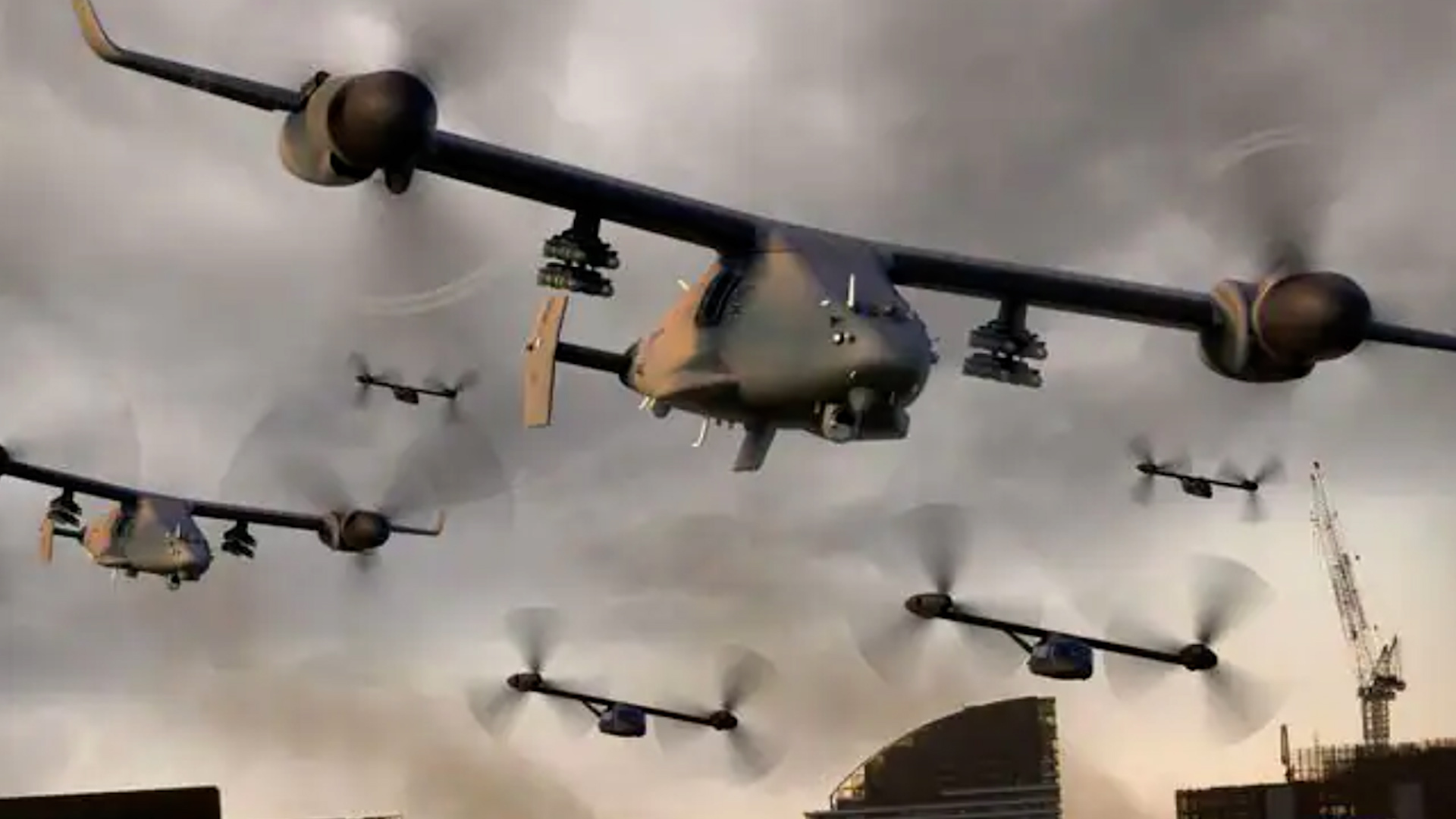
[RYAN ROBERTSON]
IF THERE’S A COMMON THREAD IN THE WAY FUTURE CONFLICTS WILL BE CONTESTED IT’S THE WORD UNMANNED.
WHETHER IT’S AUTONOMOUS OR REMOTELY PILOTED, THE TECHNOLOGY IS DEVELOPING RAPIDLY ENOUGH THESE VEHICLES ARE ALREADY BEING FACTORED INTO BATTLE PLANS.
WHILE OUR ENTRY FOR WEAPON OF THE WEEK ISN’T YET A PART OF THOSE PLANS…
IT SOON COULD BE.
THIS IS THE BELL V-2-4-7 VIGILANT….AND I’M REALLY EXCITED TO TELL YOU ALL ABOUT IT.
IF IT LOOKS SLIGHTLY FAMILIAR THERE’S A REASON FOR THAT.
T’S THE UNMANNED VERSION OF THE BELL V-280 VALOR. THE LONG-RANGE ASSAULT AND UTILITY TILT-ROTOR AIRCRAFT CHOSEN BY THE ARMY TO REPLACE THE LONG-SERVING SIKORSKY U-H-60 BLACK HAWK HELICOPTER.
ROB FREELAND, THE DIRECTOR OF GOVERNMENT RELATIONS WITH BELL, SAYS RIGHT NOW THE VIGILANT IS A CONCEPT PROJECT, BUT IT HAS BIG AMBITIONS.
[ROB FREELAND]
“The Vigilant is a tilt-rotor that’s designed from the ground up to take all of the human stuff out and give you as much range as you can out of a system. Folks always want to carry more stuff, to have an effect on the enemy. What really helps is when you can launch from an unknown areas and affect a large part of the battlespace from that unknown spot. It keeps the enemy thinking.”
[RYAN ROBERTSON]
THOSE ENEMIES MIGHT HAVE A LOT TO THINK ABOUT. A BUILT-IN FEATURE OF THE VIGILANT IS VERSATILITY. THE FOLKS AT BELL SEE THE PROJECT BEING ABLE TO FILL SEVERAL MISSIONS.
[ROB FREELAND]
“If you design something that has a lot of vertical lift capability and you can fold it up up and stuff it into the hanger on a destroyer, you don’t have to remote pilot it. It’s rules based autonomous. And you can pull that that girl out, spin her up and get out to many hundreds of miles and hang out for a long period of time. You can do anything.”
[RYAN ROBERTSON]
INCLUDED IN ANYTHING IS GATHERING INTEL WITH SURVEILLANCE AND RECONNAISSANCE, PRECISION STRIKES, AERIAL ESCORTS, AS WELL AS DELIVERING SUPPLIES AND EQUIPMENT TO TROOPS ON THE GROUND, JUST TO NAME A FEW.
SO WHAT ABOUT THE SPECS?
BELL SAYS THE 2-4-7 CAN HIT A TOP SPEED OF 300 PLUS KNOTS PER HOUR, AND HAS A LONG-RANGE CRUISING SPEED OF 240 PLUS KNOTS PER HOUR. WITH A CEILING OF 25,000 FEET THE VIGILANT CAN ALSO CARRY AN INTERNAL LOAD OF 2,000 POUNDS AND A SLING LOAD OF 9,000 POUNDS.
THE NEXT STEP FOR BELL, FINDING THE RIGHT PARTNERS FOR THE PROJECT.
[ROB FREELAND]
“The Navy is very interested in something that can take off vertically from a destroyer and get out to really long ranges that are relevant to them and their warfight. The Marine Corps is really interesting in using this. And once you get the basic aircraft in place, there’s all kinds of stuff you can do with it. You can even do logistics work with. So the idea is a multi-mission aircraft, and we’ve come a long way in that in that design.”
[RYAN ROBERTSON]
ONE FINAL THOUGHT, A BIG THANK YOU TO BELL’S DIRECTOR OF GLOBAL PUBLIC AFFAIRS, JEREMY MARTIN, AND ROB FREELAND, FOR THE INVITE AND TOUR OF BELL’S ADVANCED VERTICAL LEFT CENTER. IT WAS A VISIT WE WON’T SOON FORGET.







